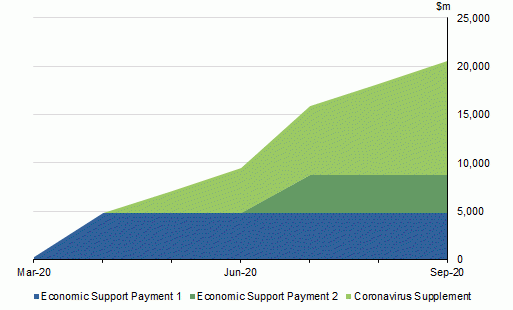Figure 2 - Australia’s containment measures contribution to overall stringency
[["01\/01\/2020","02\/01\/2020","03\/01\/2020","04\/01\/2020","05\/01\/2020","06\/01\/2020","07\/01\/2020","08\/01\/2020","09\/01\/2020","10\/01\/2020","11\/01\/2020","12\/01\/2020","13\/01\/2020","14\/01\/2020","15\/01\/2020","16\/01\/2020","17\/01\/2020","18\/01\/2020","19\/01\/2020","20\/01\/2020","21\/01\/2020","22\/01\/2020","23\/01\/2020","24\/01\/2020","25\/01\/2020","26\/01\/2020","27\/01\/2020","28\/01\/2020","29\/01\/2020","30\/01\/2020","31\/01\/2020","01\/02\/2020","02\/02\/2020","03\/02\/2020","04\/02\/2020","05\/02\/2020","06\/02\/2020","07\/02\/2020","08\/02\/2020","09\/02\/2020","10\/02\/2020","11\/02\/2020","12\/02\/2020","13\/02\/2020","14\/02\/2020","15\/02\/2020","16\/02\/2020","17\/02\/2020","18\/02\/2020","19\/02\/2020","20\/02\/2020","21\/02\/2020","22\/02\/2020","23\/02\/2020","24\/02\/2020","25\/02\/2020","26\/02\/2020","27\/02\/2020","28\/02\/2020","29\/02\/2020","01\/03\/2020","02\/03\/2020","03\/03\/2020","04\/03\/2020","05\/03\/2020","06\/03\/2020","07\/03\/2020","08\/03\/2020","09\/03\/2020","10\/03\/2020","11\/03\/2020","12\/03\/2020","13\/03\/2020","14\/03\/2020","15\/03\/2020","16\/03\/2020","17\/03\/2020","18\/03\/2020","19\/03\/2020","20\/03\/2020","21\/03\/2020","22\/03\/2020","23\/03\/2020","24\/03\/2020","25\/03\/2020","26\/03\/2020","27\/03\/2020","28\/03\/2020","29\/03\/2020","30\/03\/2020","31\/03\/2020"],[[0],[0],[0],[0],[0],[0],[0],[0],[0],[0],[0],[0],[0],[0],[0],[0],[0],[0],[0],[0],[0],[0],[0],[0],[8.3300000000000001],[8.3300000000000001],[8.3300000000000001],[8.3300000000000001],[8.3300000000000001],[8.3300000000000001],[8.3300000000000001],[16.670000000000002],[16.670000000000002],[19.440000000000001],[19.440000000000001],[19.440000000000001],[19.440000000000001],[19.440000000000001],[19.440000000000001],[19.440000000000001],[19.440000000000001],[19.440000000000001],[19.440000000000001],[19.440000000000001],[19.440000000000001],[19.440000000000001],[19.440000000000001],[19.440000000000001],[19.440000000000001],[19.440000000000001],[19.440000000000001],[19.440000000000001],[19.440000000000001],[19.440000000000001],[19.440000000000001],[19.440000000000001],[19.440000000000001],[19.440000000000001],[19.440000000000001],[19.440000000000001],[19.440000000000001],[19.440000000000001],[19.440000000000001],[19.440000000000001],[19.440000000000001],[19.440000000000001],[19.440000000000001],[19.440000000000001],[19.440000000000001],[19.440000000000001],[19.440000000000001],[19.440000000000001],[19.440000000000001],[19.440000000000001],[19.440000000000001],[27.780000000000001],[27.780000000000001],[33.329999999999998],[41.670000000000002],[44.439999999999998],[44.439999999999998],[44.439999999999998],[50],[64.349999999999994],[64.349999999999994],[64.349999999999994],[64.349999999999994],[64.349999999999994],[71.299999999999997],[71.299999999999997],[71.299999999999997]],[[0],[0],[0],[0],[0],[0],[0],[0],[0],[0],[0],[0],[0],[0],[0],[0],[0],[0],[0],[0],[0],[0],[0],[0],[0],[0],[0],[0],[0],[0],[0],[0],[0],[0],[0],[0],[0],[0],[0],[0],[0],[0],[0],[0],[0],[0],[0],[0],[0],[0],[0],[0],[0],[0],[0],[0],[0],[0],[0],[0],[0],[0],[0],[0],[0],[0],[0],[0],[0],[0],[0],[0],[0],[0],[0],[0],[0],[0],[0],[0],[0],[0],[0],[10.160526320000001],[10.160526320000001],[10.160526320000001],[10.160526320000001],[10.160526320000001],[10.695],[10.695],[10.695]],[[0],[0],[0],[0],[0],[0],[0],[0],[0],[0],[0],[0],[0],[0],[0],[0],[0],[0],[0],[0],[0],[0],[0],[0],[0],[0],[0],[0],[0],[0],[0],[0],[0],[0],[0],[0],[0],[0],[0],[0],[0],[0],[0],[0],[0],[0],[0],[0],[0],[0],[0],[0],[0],[0],[0],[0],[0],[0],[0],[0],[0],[0],[0],[0],[0],[0],[0],[0],[0],[0],[0],[0],[0],[0],[0],[0],[0],[0],[0],[0],[0],[0],[7.1428571429999996],[6.773684211],[6.773684211],[6.773684211],[6.773684211],[6.773684211],[7.1299999999999999],[7.1299999999999999],[7.1299999999999999]],[[0],[0],[0],[0],[0],[0],[0],[0],[0],[0],[0],[0],[0],[0],[0],[0],[0],[0],[0],[0],[0],[0],[0],[0],[0],[0],[0],[0],[0],[0],[0],[0],[0],[0],[0],[0],[0],[0],[0],[0],[0],[0],[0],[0],[0],[0],[0],[0],[0],[0],[0],[0],[0],[0],[0],[0],[0],[0],[0],[0],[0],[0],[0],[0],[0],[0],[0],[0],[0],[0],[0],[0],[0],[0],[0],[3.4725000000000001],[3.4725000000000001],[7.4066666669999996],[7.576363636],[7.4066666669999996],[7.4066666669999996],[7.4066666669999996],[7.1428571429999996],[6.773684211],[6.773684211],[6.773684211],[6.773684211],[6.773684211],[7.1299999999999999],[7.1299999999999999],[7.1299999999999999]],[[0],[0],[0],[0],[0],[0],[0],[0],[0],[0],[0],[0],[0],[0],[0],[0],[0],[0],[0],[0],[0],[0],[0],[0],[0],[0],[0],[0],[0],[0],[0],[0],[0],[0],[0],[0],[0],[0],[0],[0],[0],[0],[0],[0],[0],[0],[0],[0],[0],[0],[0],[0],[0],[0],[0],[0],[0],[0],[0],[0],[0],[0],[0],[0],[0],[0],[0],[0],[0],[0],[0],[0],[0],[0],[0],[6.9450000000000003],[6.9450000000000003],[7.4066666669999996],[7.576363636],[7.4066666669999996],[7.4066666669999996],[7.4066666669999996],[7.1428571429999996],[10.160526320000001],[10.160526320000001],[10.160526320000001],[10.160526320000001],[10.160526320000001],[14.26],[14.26],[14.26]],[[null],[null],[null],[null],[null],[null],[null],[null],[null],[null],[null],[null],[null],[null],[null],[null],[null],[null],[null],[null],[null],[null],[null],[null],[null],[null],[null],[null],[null],[null],[null],[null],[null],[null],[null],[null],[null],[null],[null],[null],[null],[null],[null],[null],[null],[null],[null],[null],[null],[null],[null],[null],[null],[null],[null],[null],[null],[null],[null],[null],[null],[null],[null],[null],[null],[null],[null],[null],[null],[null],[null],[null],[null],[null],[null],[null],[null],[null],[null],[null],[null],[null],[null],[null],[null],[null],[null],[null],[null],[null],[null]],[[0],[0],[0],[0],[0],[0],[0],[0],[0],[0],[0],[0],[0],[0],[0],[0],[0],[0],[0],[0],[0],[0],[0],[0],[0],[0],[0],[0],[0],[0],[0],[0],[0],[0],[0],[0],[0],[0],[0],[0],[0],[0],[0],[0],[0],[0],[0],[0],[0],[0],[0],[0],[0],[0],[0],[0],[0],[0],[0],[0],[0],[0],[0],[0],[0],[0],[0],[0],[0],[0],[0],[0],[0],[0],[0],[0],[0],[0],[0],[0],[0],[0],[0],[3.3868421049999999],[3.3868421049999999],[3.3868421049999999],[3.3868421049999999],[3.3868421049999999],[3.5649999999999999],[3.5649999999999999],[3.5649999999999999]],[[0],[0],[0],[0],[0],[0],[0],[0],[0],[0],[0],[0],[0],[0],[0],[0],[0],[0],[0],[0],[0],[0],[0],[0],[0],[0],[0],[0],[0],[0],[0],[0],[0],[0],[0],[0],[0],[0],[0],[0],[0],[0],[0],[0],[0],[0],[0],[0],[0],[0],[0],[0],[0],[0],[0],[0],[0],[0],[0],[0],[0],[0],[0],[0],[0],[0],[0],[0],[0],[0],[0],[0],[0],[0],[0],[0],[0],[0],[7.576363636],[7.4066666669999996],[7.4066666669999996],[7.4066666669999996],[7.1428571429999996],[6.773684211],[6.773684211],[6.773684211],[6.773684211],[6.773684211],[7.1299999999999999],[7.1299999999999999],[7.1299999999999999]],[[0],[0],[0],[0],[0],[0],[0],[0],[0],[0],[0],[0],[0],[0],[0],[0],[0],[0],[0],[0],[0],[0],[0],[0],[0],[0],[0],[0],[0],[0],[0],[10.002000000000001],[10.002000000000001],[11.664],[11.664],[11.664],[11.664],[11.664],[11.664],[11.664],[11.664],[11.664],[11.664],[11.664],[11.664],[11.664],[11.664],[11.664],[11.664],[11.664],[11.664],[11.664],[11.664],[11.664],[11.664],[11.664],[11.664],[11.664],[11.664],[11.664],[11.664],[11.664],[11.664],[11.664],[11.664],[11.664],[11.664],[11.664],[11.664],[11.664],[11.664],[11.664],[11.664],[11.664],[11.664],[10.4175],[10.4175],[11.109999999999999],[11.36454545],[14.813333330000001],[14.813333330000001],[14.813333330000001],[14.28571429],[13.54736842],[13.54736842],[13.54736842],[13.54736842],[13.54736842],[14.26],[14.26],[14.26]],[[0],[0],[0],[0],[0],[0],[0],[0],[0],[0],[0],[0],[0],[0],[0],[0],[0],[0],[0],[0],[0],[0],[0],[0],[8.3300000000000001],[8.3300000000000001],[8.3300000000000001],[8.3300000000000001],[8.3300000000000001],[8.3300000000000001],[8.3300000000000001],[6.6680000000000001],[6.6680000000000001],[7.7759999999999998],[7.7759999999999998],[7.7759999999999998],[7.7759999999999998],[7.7759999999999998],[7.7759999999999998],[7.7759999999999998],[7.7759999999999998],[7.7759999999999998],[7.7759999999999998],[7.7759999999999998],[7.7759999999999998],[7.7759999999999998],[7.7759999999999998],[7.7759999999999998],[7.7759999999999998],[7.7759999999999998],[7.7759999999999998],[7.7759999999999998],[7.7759999999999998],[7.7759999999999998],[7.7759999999999998],[7.7759999999999998],[7.7759999999999998],[7.7759999999999998],[7.7759999999999998],[7.7759999999999998],[7.7759999999999998],[7.7759999999999998],[7.7759999999999998],[7.7759999999999998],[7.7759999999999998],[7.7759999999999998],[7.7759999999999998],[7.7759999999999998],[7.7759999999999998],[7.7759999999999998],[7.7759999999999998],[7.7759999999999998],[7.7759999999999998],[7.7759999999999998],[7.7759999999999998],[6.9450000000000003],[6.9450000000000003],[7.4066666669999996],[7.576363636],[7.4066666669999996],[7.4066666669999996],[7.4066666669999996],[7.1428571429999996],[6.773684211],[6.773684211],[6.773684211],[6.773684211],[6.773684211],[7.1299999999999999],[7.1299999999999999],[7.1299999999999999]]]
[]
[{"axis_id":"0","tick_interval":"14","axis_min":"","axis_max":"","axis_title":"","precision":-1,"axis_units":"","tooltip_units":"","table_units":"","data_unit_prefix":"","data_unit_suffix":"","reverse_axis":false}][{"axis_id":"0","tick_interval":"10","axis_min":"0","axis_max":"80","axis_title":"index","precision":"1","table_units":"(pts)","tooltip_units":"(pts)","axis_units":"","data_unit_prefix":"","data_unit_suffix":"","reverse_axis":false}]
